Dark Skies Over Plano: A Discussion of Storms from a Tree Service Perspective


Storm damage is a hazard to people, animals, and structures. Proper tree care can prevent or mitigate storm damage like falling limbs or splitting trunks.
It seems that we have been getting our April showers in September this year! North Texas storms are always a mixed blessing and, for those of us in tree service, a good reminder of the needs of our urban forest. Plano, Texas, with its mix of development ages and styles, features a varied mix of trees that require particular attention in this stormy weather.
Profile of a Plano Tree
Trees say a lot about an area. In older Plano neighborhoods, we often see well-established oaks and pecans, some even nearing the end of their life. New communities can have a wider variety of species but can struggle with over-planting or construction stress. In the middle is a varied mix of species and ages. Plano, like many cities, has grown in stages. Earlier developments feature trees that are now coming into maturity, while there are still many recently-planted trees in newer areas. Age and size can greatly affect a tree’s ability to weather a storm, and we can sometimes see a range of damage in a relatively small geographic area. Plano is a city that values its trees and understanding the needs of the different trees is essential to providing effective tree service in Plano.
Storms and Young Trees
Newly-planted trees need particular care and attention to recover from transplantation stress and become established. If the trees are located near to recent construction, there may be other stressors, such as soil compaction or root damage. A stressed tree that has not been able to send out stabilizing roots is at higher risk from flash flooding and high winds. Improperly-planted trees can be uprooted in a strong storm, even with supporting stakes and wires.
Smaller trees that are planted near or under the canopy of older, larger trees are also at risk of damage from falling branches. While trees have adapted to resist high winds and rain, a large branch from an overhanging tree can fall with enough force to break young limbs and even the trunks of smaller trees. A similar risk is posed by hail or other storm debris. Fortunately, young trees are naturally more flexible, but they must be healthy to have the best chance to survive damage.
The best way to prepare a young tree to weather a storm is to follow best practices when planting, water regularly, and protect the tree from stress, pests, and diseases. A certified arborist can evaluate the status of your young trees and make recommendations for keeping them healthy, such as a Plant Health Care program of fertilization or pest control.
Storms and Large Trees
As a tree grows, it gains stability from larger roots and increasing layers around its trunk and branches. However, as limb size increases, so does weight and stress on joints.. Periods of drought can cause cause sudden limb drop, which we saw in Plano in the summer of 2018. Larger trees can also harbor more insects, bacteria, and fungi, some of which can cause limb die-back. Limb joints can become stress points, especially when tree formation allows rot to infiltrate a joint. Issues arising from improper trimming are amplified the larger a tree gets, as even healthy limbs can become unbalance and break in strong winds.

Trees with underlying stability issues are easy targets for storms.
It is a common misconception that the best way to prevent limb breakage is to reduce weight and size by removing as much new growth as possible from older limbs. At the extreme, this can be seen in stripping branches out to the ends, sometimes called a “lion tail” trim. While this does reduce limb weight, it concentrates all the remaining weight to the ends of branches. Furthermore, leaves can actually act as a windbreak and buffer, absorbing the force of high winds and distributing it over a larger area. While it is true that a bare limb has a smaller profile, it also has no shock absorbers, and will simply break when the wind gets too strong. Weight reduction should be performed with care and attention to overall limb resilience and balance.
The longer a tree survives, the more it grows and adapts in response to prevailing weather patterns. Proper tree care consists of helping the tree’s natural defenses. In nature, trees drop dead wood as needed. In a populated environment, we can help the tree get rid of dead wood by removing it safely, before a storm has the chance to. Growth defects or weak joints can be reinforced with cables and bracing and trees should be trimmed to promote balance and not stress weak points in the tree. A certified arborist can examine your tree for signs of stress and disease, and one with a Tree Risk Assessment Qualification is specially trained to asses potential safety issues.
Guidelines for Every Tree
For all trees, there are a few general principles to guide prevention of storm damage:
- Regularly inspect the tree for dead or broken limbs, and remove promptly
- Properly trim trees (no “lion tail” trims) to bolster natural wind resistance
- Reinforce weak joints or splitting areas with bracing or cables
- If a tree is showing signs of stress (yellowing leaves, die-back, insect activity), contact a certified arborist to diagnose and treat any issues
- Be familiar with the type and age of your trees and their particular care needs
- Identify any potential risks posed by falling limbs (structures, landscaping, vehicles, etc.)
Plano: A City of Trees
Every community values its environment. Parks, greenswards, and trees are an essential part of making an urban area a safe, healthy, and inviting place to call home. The city of Plano, with its mix of tree species and ages, is an outstanding example of how a municipality grows with and around its trees. Working with Texas A&M AgriLife Extension and the Texas Forest Service, Plano’s Parks and Recreation and Urban Forestry departments provide valuable resources for Plano residents to learn more about tree care. Nature preserves like Arbor Hills give residents and visitors to Plano a refreshing oasis in the heart of the Metroplex. As Plano continues to grow, its trees will continue to mature and need care. Tree services in Plano can only do so much; it is up to Plano residents and tree owners to remain engaged in the life of the community and the life of its trees.
At Texas Tree Surgeons, we pride ourselves on providing exceptional tree care in Plano and the surrounding areas. Whether it is storm cleanup, regular tree trimming, disease management, or consultation services, we love our Plano customers and we love their trees. We are always available to come out to your home and inspect your trees and we love to answer tree questions! Contact us online or give us a call, and we’ll see what we can do to help your trees not just survive a storm, but grow and thrive and add beauty and value to Plano and all our North Texas communities.
Related Blogs
Similar blogs related to this topic


How Does Summer Weather Affect Oak Tree Health in Dallas-Fort Worth?
As we transition out of Oak Wilt season we are now in the thick of extreme heat and long days in full sun. Summers in Dallas-Fort Worth can be quite intense with soaring temperatures and…
Read more


